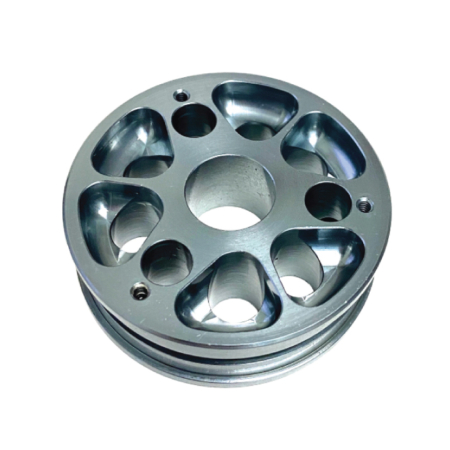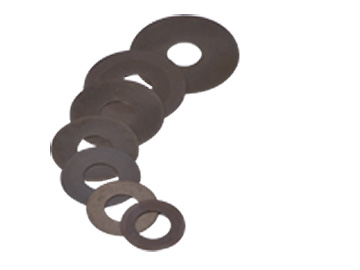Shock Tuning 101
General Shock Tuning Theory
Shock valving plays a crucial role in both ride quality and handling, though these two aspects often conflict. High levels of low-speed rebound can enhance cornering control but might result in a rough suspension and hinder its ability to extend in rough terrain. Therefore, it’s advisable to use sway bars and adjust the shocks primarily for ride quality.
When deciding on your tuning preferences, ensure they align with the types of terrain you most frequently encounter. While short-travel setups can be surprisingly responsive when tuned stiff, they may cause discomfort on smaller bumps. Conversely, long-travel suspensions offer a smooth ride that absorbs most obstacles but can become overly soft, negatively impacting handling. Tailor your tuning specifically to the conditions you expect to face.
Engaging in shock tuning can be highly rewarding; with some effort, you can achieve significant enhancements in both ride comfort and performance. The following guide contains useful information for tuning Fox, King, and Sway-A-Way coilover, bypass, and smoothie shocks, along with valuable tips.
Get Started Tuning
Warning: Be careful! You will be driving a vehicle with untuned suspension which may behave in unpredictable and uncontrollable ways.
Start by selecting proper coilover springs and setting ride height as described in our article about how to measure and set spring preload.
Back off all dual rate nuts so they don’t contact at any point.
Set tire pressure to the amount you intend to run off-road, this has a large impact on harshness.
Set air bump pressure to 1/6 of the corner sprung weight.
Example:: 600 lb corner sprung eight = 100 psi of nitrogen
It is better to start too soft than too stiff, so if you’re creating a baseline tune, start soft.
Begin with small whoops and gradually navigate through them, increasing both their size and your speed as you become more comfortable. To effectively tune your suspension, it’s essential to engage it, so look for a set of whoops that encourages suspension movement without pushing you beyond your comfort level. Recording videos can be incredibly beneficial for analyzing performance since various factors can affect it. Additionally, using zip ties on the piston rods is an excellent method to monitor the amount of travel being utilized (avoid this if your shocks are bottoming out, as it could potentially harm the seals).
Which Damping Changes to Make
The objective is to maintain a level chassis as you navigate through the whoops while maximizing your suspension travel in the challenging terrain you expect to face.
The rebound should allow the axle to drop while keeping the chassis level between whoops.
During compression, the chassis should rise gently as the tires meet the next whoop.
If the chassis is pulled into the whoops or drops abruptly, your high-speed rebound is too high.
Conversely, if the chassis rises excessively through the whoops or drop, your high-speed rebound is too low.
If the chassis bounces up forcefully through the whoops, your high-speed compression is excessive.
If the chassis dips into a whoop or bottoms out too soon, your high-speed compression is inadequate.
If your compression and rebound settings are roughly aligned through the whoops but the suspension feels harsh over small bumps, begin by reducing low-speed damping, starting with compression.
As the valving adjustments get nearer to optimal, consider the gas pressure in the air bumps as well.
Once you have mastered navigating the whoops, lower the dual rate stops. These will assist in lifting the chassis while going through the whoops. Set the front dual rate slider to engage after 2 inches of upward travel (1 to 1.5 inches on the coilover), and adjust the rear to engage after 4 inches of upward travel (2 to 3 inches on the coilover). Fine-tune the stops as needed to achieve a level stance while traversing the whoops. The dual rate stops will enhance chassis control. If you’re seeking even greater control, increase the low-speed rebound while being ready to decrease the high-speed rebound.
For the final phase, evaluate how the vehicle behaves during jumps and when bottoming out. The vehicle should rebound and rise above the ride height before settling back down. It should lift swiftly and uniformly. This behavior results from the mid-speed damping, though there’s no single adjustment for it, so you must adjust either high or low-speed damping to modify the vehicle’s response.
Which Valving Changes to Make
Take your time when re-valving, ensuring everything is thoroughly cleaned and all changes are properly documented. It’s advisable to adjust only one of the four variables at a time—either compression or rebound, and front or rear. Begin by softening the compression, then fine-tune the rebound, including the bleed. Afterward, move on to gradually increasing the compression damping.
Rebound
Through bleed has a major impact on the entire rebound curve so you will want to tune rebound first then leave the bleed alone until you’re doing fine tuning.
On heavy rebound tunes:
- Low speed and high speed are affected by bleed.
- Low speed is not affected by disks unless you run a flutter stack.
On light rebound tunes:
- Only low speed is affected by bleed, and with diminishing returns as bleed is increased.
- Valve disks impact low speed damping.
Compression
Because bleed is so influential on rebound and much less influential on compression it is not recommended to use bleed to tune compression. Therefore compression is entirely controlled by disks:
- Disk get exponentially stiffer with thickness (a 0.015″ thick disk is more than twice as stiff at a 0.008″ thick disk).
- The two largest diameter disks have the greatest impact on all damping.
- The smallest diameter disks impact all damping but can be used to target high speed compression.
Bypass Special Notes
Bypass shocks function by allowing directionally controlled free bleed between the inlet and outlet of each tube. If the tubes are fully closed, particularly on compression, you’re likely to encounter harshness. While bypass shocks offer a wide range of external adjustments, it’s still common to revalve them for optimal performance. A key aspect of tuning is managing the balance between the force generated by the disk and the force controlled by the bleed.
Valving Guides
Regardless of which brand you have, Fox has a great valving guide for disk thicknesses.
FOX 2.0 Shock Valving Specifications
FOX 2.5 Shock Valving Specifications
FOX 3.0 Shock Valving Specifications
Comment on this article or ask for more like it here.



















Hi.. regarding the pressure.. do i need higher pressure with heavier valving.. or does it not matter?? Since your article stated the pressure is set based on the weight of the car in that corner.. and will the pressure change affect the low speed or high speed compression damping?? And does it affect the rebound characteristic of the damper also??
The air pressure mentioned in this article is referring to the air bumps, not the shocks/coilovers. Fox Shocks/Coilovers should be set to 200psi and King should be at 150psi.
How do you read the fox 2.5 tune, what do the #30, #35,#40 ect…. correlate to. I understand the shim thickness, just not getting what those # numbers are there for.
Those numbers refer to the outside diameter of the valve. See here for more: https://accutuneoffroad.com/wp-content/uploads/2015/07/FOX-2.0-Shock-Valving-Specifications.pdf
I have a 2003 extreme performance II 2 seat vw turbo rail weighs about 1500#. I have king 2.5 Coilovers,fronts 12 inch stroke piggy back, rear 16 inch stroke remote res Front spring 150# both up and low, rear springs #250/#150. The car is uncontrollable in whoops, rear bucks bad unless I’m absolutely hammered down on the throttle and then it’s still scary. I ordered .008/.010 valve shims from king, haven’t installed them yet, I have no clue what valving is currently in them. In the short choppy stuff slow speed it damn near bursts my kidneys, at speed it kinda bounces off the tops. I have maybe 1- 1/2” preload in the front and almost zero rear. I need some advice on how to get this thing under control. I’m trying to follow the above setup guide but it doesn’t seem to do much when I lower secondary rings anywhere. Please help.
Unfortunately we simply cannot recommend valving that is needed in your shocks to make it perform, thats what we specialize in as a business. If you would like us to custom valve them, we are happy to do so. Please give our sales team a call to get the process started (424) 377-0808. Thanks
Thanks so much for advice! I enjoy reading and learning from your posts!